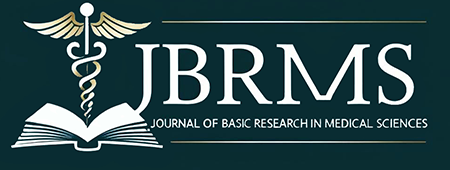Volume 10, Issue 2 (3-2023)
jbrms 2023, 10(2): 62-73 |
Back to browse issues page
Download citation:
BibTeX | RIS | EndNote | Medlars | ProCite | Reference Manager | RefWorks
Send citation to:



BibTeX | RIS | EndNote | Medlars | ProCite | Reference Manager | RefWorks
Send citation to:
Batavani M R, Zalaki Badil F, Zolaktaf V. The Relationship Between ACE I/D Gene Polymorphism rs4646994 and Incidence and Severity of sport Injuries in Iranian Male Elite Weightlifters. jbrms 2023; 10 (2) :62-73
URL: http://jbrms.medilam.ac.ir/article-1-727-en.html
URL: http://jbrms.medilam.ac.ir/article-1-727-en.html
Center of Physical Education, Isfahan University of Technology, Isfahan 84156-83111, Iran , babaei@iut.ac.ir
Abstract: (1237 Views)
Introduction: Despite careful control of environmental factors, there is a wide variety of interpersonal muscle-induced muscle damage. Genetic changes can also be important in determining susceptibility to injury. Weightlifting is one of the most successful Iranian sports teams in Olympics; so, the aim of this study was the investigation of the relationship between ACE I/D gene polymorphism rs4646994 and incidence and severity of sport injuries in Iranian male elite weightlifters.
Materials and Methods: The study was cross-sectional research that conducted in 2022. The statistical population consisted of male elite weightlifters from Isfahan consisting of 31 athletes who all were investigated as sample. A questionnaire was used to collect the injuries data. Saliva samples were taken from all subjects and DNA was extracted and genotyped by using real-time polymerase chain reaction (real time-PCR). Chi-square and regression tests were used to analyze the data. Significance level was also considered at P < 0.05.
Results: There was a significant difference in the incidence of injuries in different genotypes. ID genotype (59.4%) had the highest incidence of injury in compare with DD (23.2%) and II (17.4%) genotypes (χ2 = 21.47, P = 0.001). Also, there was a significant difference in the severity of injuries in different genotypes (χ2 =15.59, P = 0.049); but there was no relationship between genotype and incidence and the severity of sports injuries in selected Iranian elite male weightlifters (P = 0.715).
Conclusion: The results showed differences in the incidence and severity of sport injuries in different genotypes, hence it would be important in the prediction injury risk in weightlifters.
Materials and Methods: The study was cross-sectional research that conducted in 2022. The statistical population consisted of male elite weightlifters from Isfahan consisting of 31 athletes who all were investigated as sample. A questionnaire was used to collect the injuries data. Saliva samples were taken from all subjects and DNA was extracted and genotyped by using real-time polymerase chain reaction (real time-PCR). Chi-square and regression tests were used to analyze the data. Significance level was also considered at P < 0.05.
Results: There was a significant difference in the incidence of injuries in different genotypes. ID genotype (59.4%) had the highest incidence of injury in compare with DD (23.2%) and II (17.4%) genotypes (χ2 = 21.47, P = 0.001). Also, there was a significant difference in the severity of injuries in different genotypes (χ2 =15.59, P = 0.049); but there was no relationship between genotype and incidence and the severity of sports injuries in selected Iranian elite male weightlifters (P = 0.715).
Conclusion: The results showed differences in the incidence and severity of sport injuries in different genotypes, hence it would be important in the prediction injury risk in weightlifters.
Type of Study: Research |
Subject:
Medical physiology
Received: 2022/10/25 | Accepted: 2023/02/26 | Published: 2023/03/28
Received: 2022/10/25 | Accepted: 2023/02/26 | Published: 2023/03/28
Send email to the article author
| Rights and permissions | |
 |
This work is licensed under a Creative Commons Attribution-NonCommercial 4.0 International License. |





